Carlsbad Caverns – Absolutely Nothing Like It
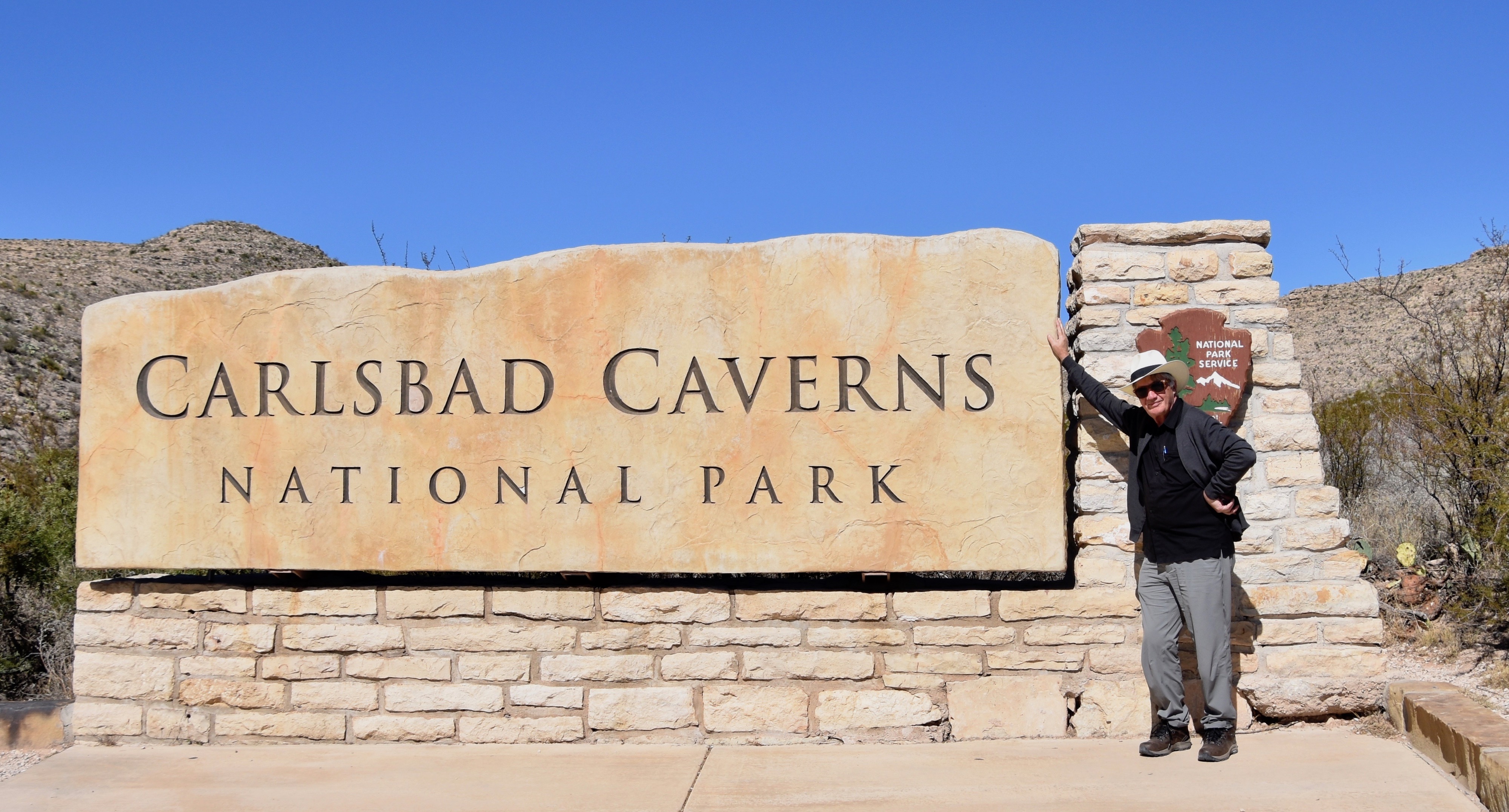
I’ve been visiting caves and cave systems around the world for many decades and thought I had seen some of the best, for example the caves of Nerja, Spain which I wrote about in this post and described as phantasmagorical, which they are. But, until you’ve been to Carlsbad Caverns and experienced the excellent way the U.S. Park System has made visiting it possible, I don’t think you can say you’ve truly seen one the best cave systems on planet Earth. It’s a bit out of the way, tucked on the backside of the Guadalupe Mountains in a remote part of southeast New Mexico, but believe me it’s worth going out of your way to visit. Here’s why.
The Creation of Carlsbad Caverns
In my last post Alison and I visited Guadalupe Mountains National Park and discovered that what are now the highest peaks in Texas was once the sea bed of an ancient Permian Sea raised up by tectonic activity in the Cenozoic Era. In other words, the Guadalupes are made of sedimentary limestone which is very susceptible to erosion and the development of cave systems. From this map you can see that Carlsbad Caverns National Park occupies a large portion of the northeast Guadalupe Mountains and almost abuts Guadalupe Mountains National Park in Texas so it’s the same type of geologic system.
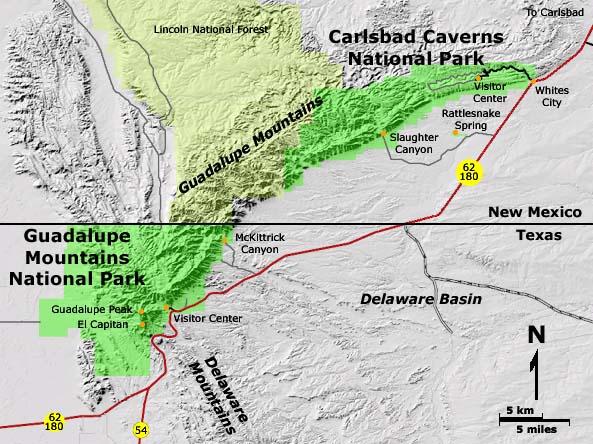
When most people think of erosion what comes to mind are the corrosive effects of water, wind and ice over thousands of years, but in the case of Carlsbad Caverns the erosion was caused by something else – sulphuric acid. Deep under present day southeast New Mexico lies a portion of the Mid-Continent Oil Field. I never thought of New Mexico as a big oil and gas producer until we drove around some of the backroads outside the city of Carlsbad and saw oil rigs everywhere. The state has the fifth largest oil and gas reserves in the country, more than some states like Oklahoma and Louisiana which are renowned (or vilified, depending on your point of view) for their petroleum production. So what happened is that the petroleum underneath the Guadalupe Mountains seeped upward naturally and mixed with groundwater seeping downward and created sulphuric acid which is what in turn eroded the limestone, turning some of it into gypsum while the rest just floated away leaving behind a massive cave system. Throw in a few million years for groundwater to mix with carbon dioxide to create calcium carbonate and you’ve got your stalactites, stalagmites, soda straws, draperies and other weird rock formations that make visiting these particular caves so interesting.
Fortunately for the world, Carlsbad Caverns National Park was first designated as a National Monument in 1923 and upgraded to a National Park in 1930, meaning that whatever petroleum reserves lie deep beneath it will never be exploited. Given who’s sitting in the White House that may be over optimistic, but let’s hope not. In 1995 Carlsbad Caverns National Park was designated a UNESCO World Heritage Site with this criteria for designation:
The more than 100 limestone caves within Carlsbad Caverns National Park are outstanding and notable world-wide because of their size, mode of origin, and the abundance, diversity and beauty of the speleothems (decorative rock formations) within. On-going geologic processes continue to form rare and unique speleothems, particularly in Lechuguilla Cave. Carlsbad Caverns and Lechuguilla Cave are well known for their great natural beauty, exceptional geologic features, and unique reef and rock formations. The Permian-aged Capitan Reef complex (in which Carlsbad Caverns, Lechuguilla and other caves formed) is one of the best preserved and most accessible complexes available for scientific study in the world.
Visiting the Caverns
As noted above, getting to Carlsbad Caverns is not that easy, at least it wasn’t for us. There’s only one road leading into the actual caverns and Visitor Center and that’s off state highway 62 thirty miles (48 kms.) southwest of the small city of Carlsbad. We first tried to time our visit for right around when the park opens at 8:00 AM and were just a few miles from the park entrance when we came across a roadblock on the lanes heading southwest – it’s a divided highway from the New Mexico border to Carlsbad. Somehow, despite the fact that the lanes heading in each direction are separated by a considerable meridian and visibility is excellent, we could see the remains of two vehicles that appeared to have crashed head on. A State Trooper told us it happened all the time and that he expected the road to be closed for hours. No one from Carlsbad was getting into the National Park that morning. And that’s how and why we got to tour the backroads of Eddy County, New Mexico which, with all the oil and gas activity has to be, at one and the same time, one of the most prosperous and ugly places in the American West.
The road finally reopened around noon and we got to the Visitor Center shortly thereafter. There is no fee to enter the park so if you just wanted to see the Visitor Center or hike one of the trails in the park it won’t cost a dime, but if you want to see the caverns that’s $15.00. Since we were going to be going to a lot of National Parks and Monuments in New Mexico I paid $80.00 for an America the Beautiful Pass that includes up to four people per site and over 2,000 places in the U.S. Over the next ten days we saved a ton of money using this pass and I highly recommend it for anyone who spends any time visiting natural and historical sites in the United States.
There are two ways to enter the caverns – the easiest is to take the elevator in the Visitor Centre directly down to the bottom of the caverns where portions of the path that leads to the Big Room are wheel chair accessible. The other is to walk down via the natural entrance which is a couple hundred yards from the Visitor Center. This somewhat hokey tourist map shows the natural entrance to the left and the elevator shaft in the middle with a helpful Space Needle to the right to let you know just how far down you are going. There are also over thirty-five natural features you can see if you explore the entire system that is open to the public. If you enter via the natural entrance it is 1.25 miles (2kms.) to reach the start of the 1.25 mile (2kms.) trail that loops around the Big Room.
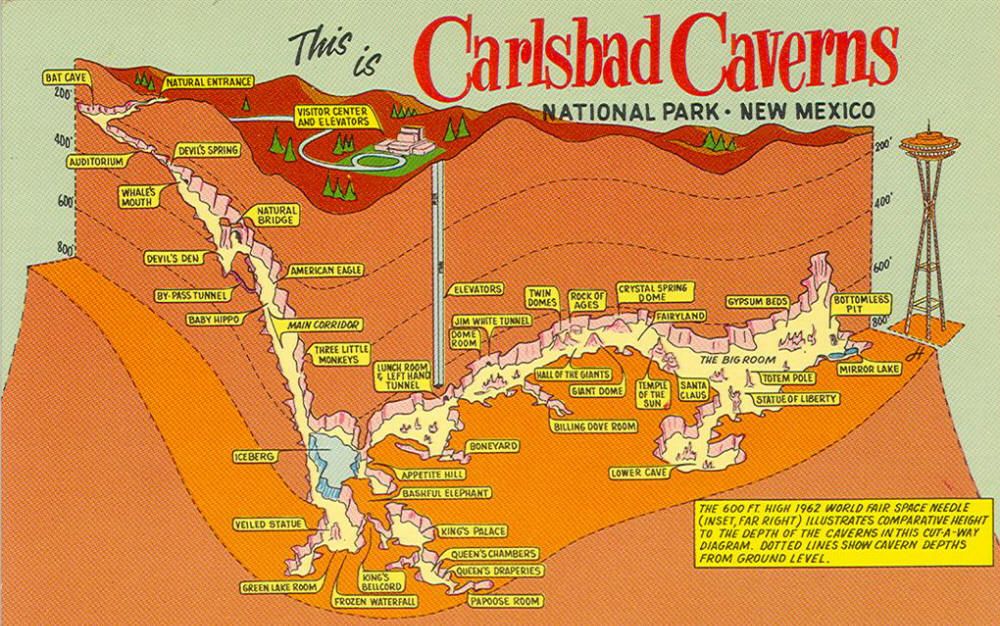
I have to confess that I was so anxious to get inside the caverns that I didn’t pay much attention to the exhibits in the Visitor Center. Alison commented that my quickened pace was always a dead give away when I was about to embark upon a new adventure that I had been looking forward to for most of my life.
Before you are allowed to go down the natural entrance you must listen to a list of does and don’t from a park ranger, the most obvious ones being don’t touch the delicate cavern formations and try to keep your voice down as it carries like crazy inside the caverns. To those I would add wear footwear that has a really good grip as the way down the natural entrance is very steep and in places slippery. Take a flashlight or headlamp to help illuminate the natural features of the cave and in other places help you find slippery parts of the path. You can use the flashlight in your smart phone, but a real flashlight is much better. In terms of photographs, you are not going to get great ones with anything but an external flash or by using a tripod. There are washrooms and food and drink for sale near the elevator. With those preliminaries out of the way let’s go exploring starting with this very weird looking caterpillar I found just outside the entrance.
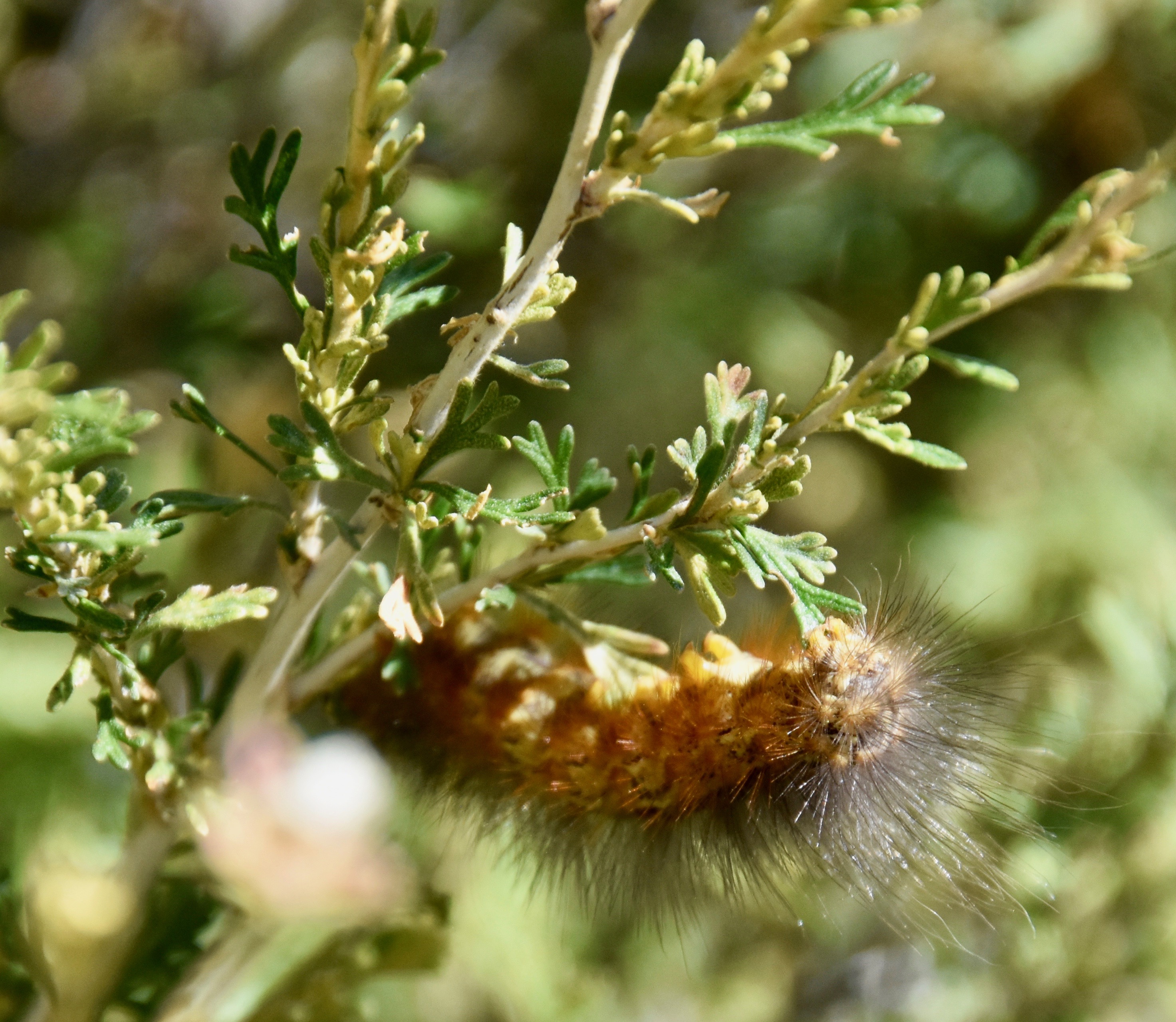
Ever since man first descended from the trees, or at least our primeval hominid ancestors did, caves have held both a fascination and a dread for humankind. They can be places of safety and succour from the dangers of the outside world; Zeus avoiding his child eating father Cronos by being hidden in the Dikteon Cave on Crete comes to mind. But on the other hand caves hold their own terrors – cave bears, bandits, ghosts, bats and perhaps worst of all, Stygian darkness.
The natural entrance to Carlsbad Caverns brought out both of those thoughts in me as I looked down into its gaping black maw. Who in their right mind would descend into that darkness with only a torch and a wire ladder as teenager Jim White did in 1898?
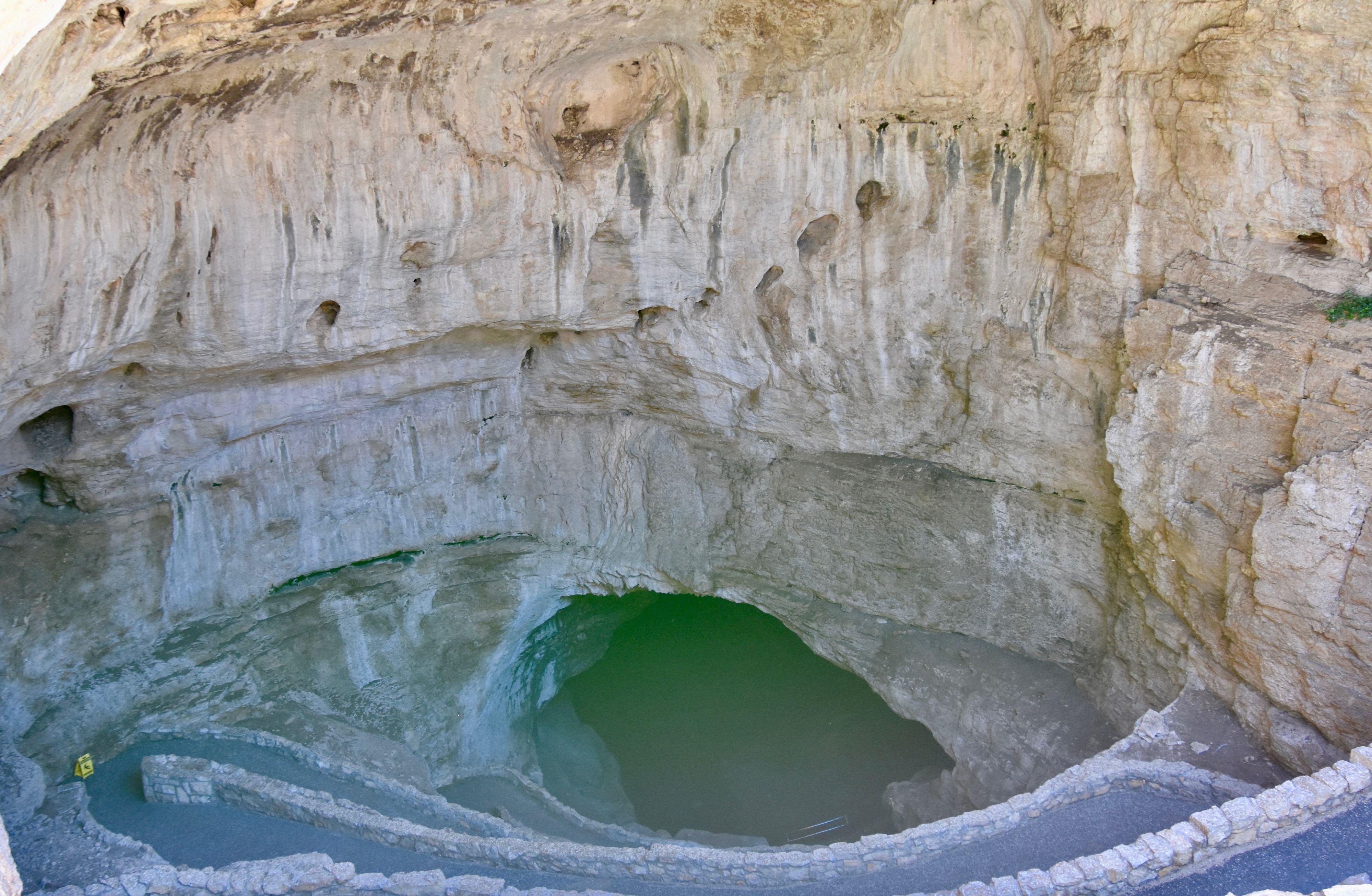
However, fast forward to 2019 and the National Park Service has done an incredible job of making a trip into Carlsbad Caverns as easy as modern technology allows. To get to the entrance you take this series of switchbacks down what seems like a couple hundred feet.
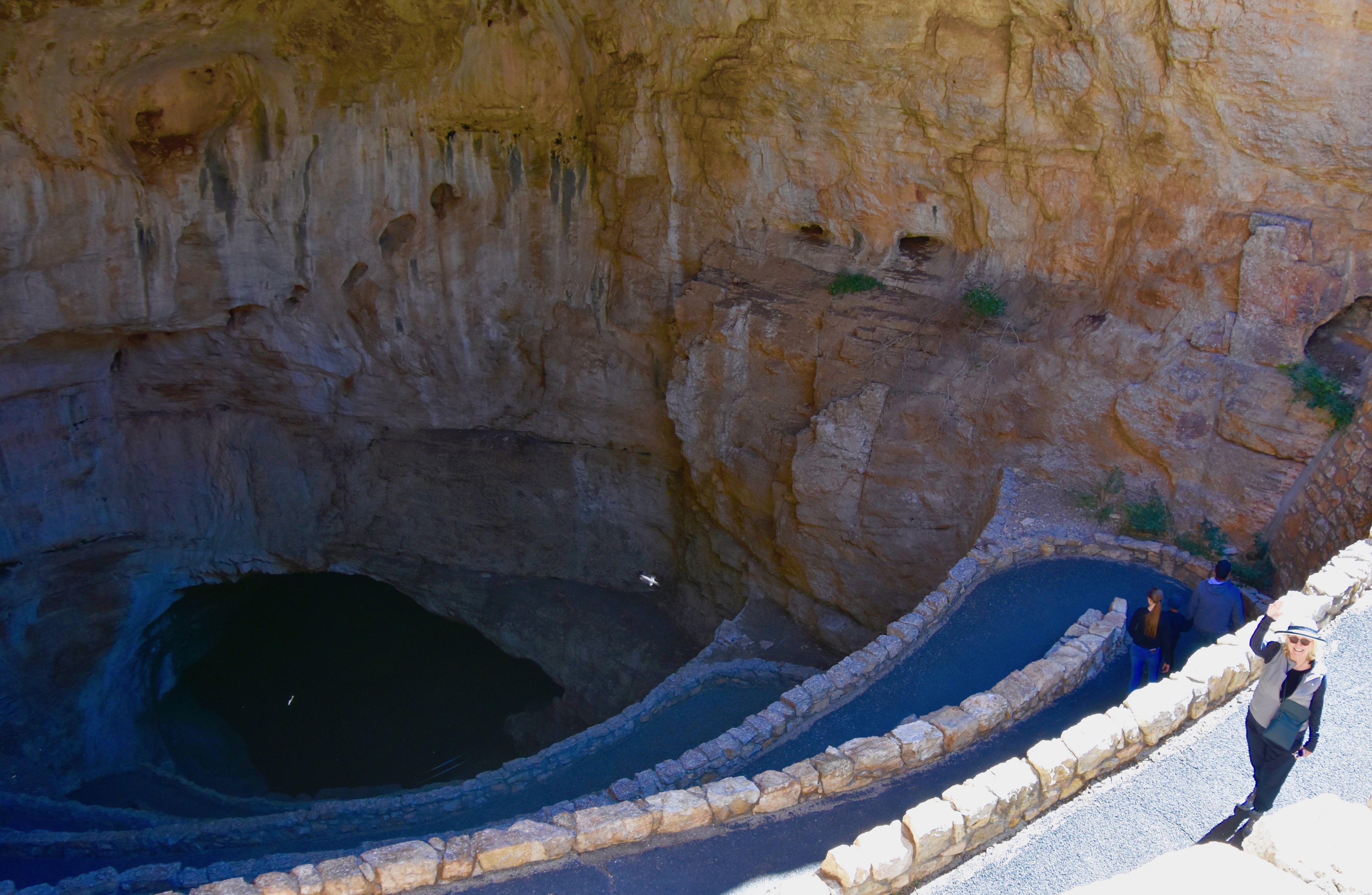
Once inside you follow the path which you can see in this photograph down and down and down.
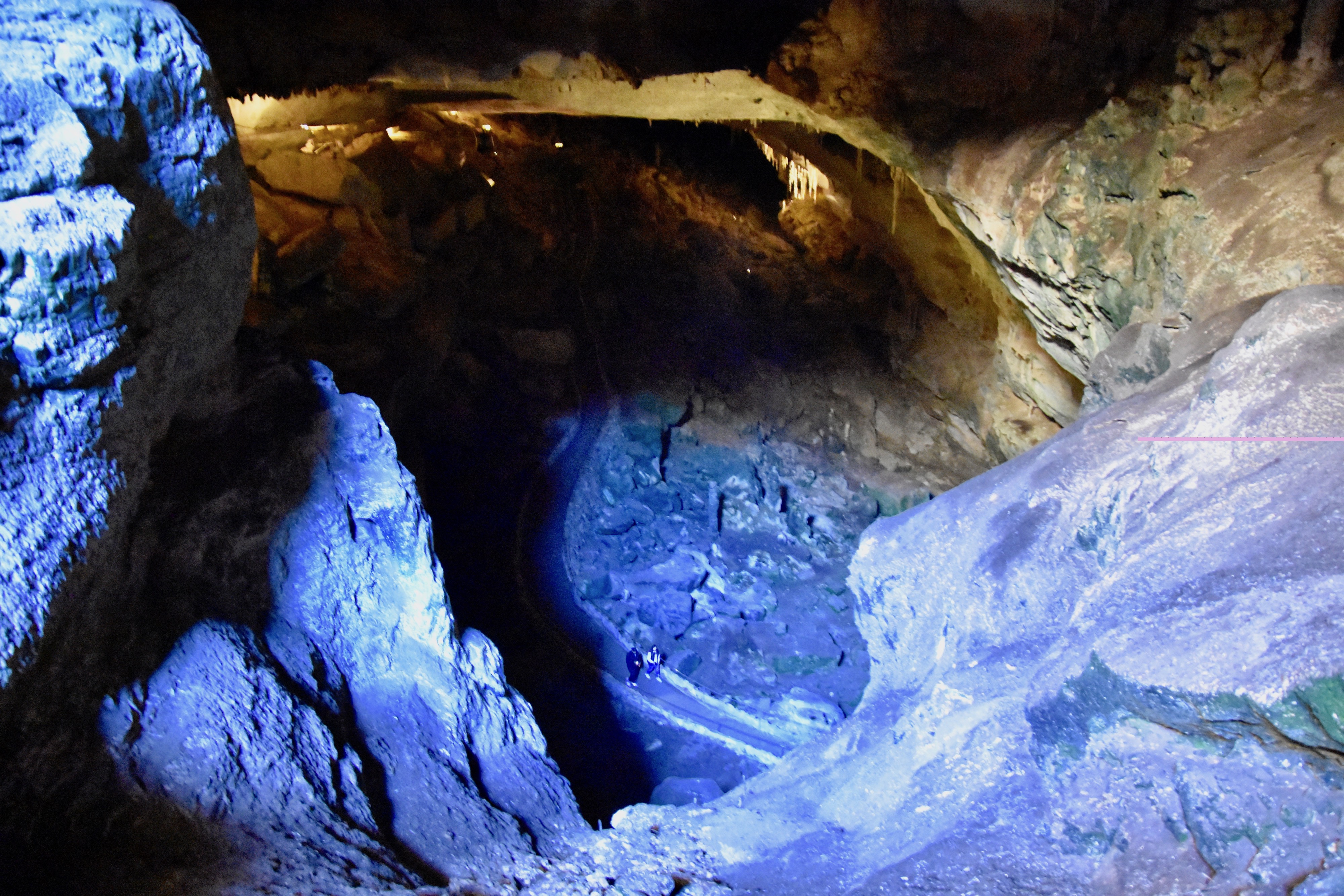
At 200 feet down you pass the entrance to the Bat Cave, but it doesn’t lead to Wayne Manor, but rather the daytime resting and nesting spots for the nearly 800,000 bats that dwell there. There is no entry to this cave and you won’t see any bats during your visit, but if you do stick around until dusk you can watch them emerge from the designated viewing spot not far from the natural entrance.
The number and variety of speleothems, the scientific word that covers all the variety of formations within caves, is what really makes Carlsbad Caverns one of the best cave systems to visit anywhere. Any number will almost take your breath away with their sheer beauty, delicacy and in some cases, colour.
What follows are a combination of my photos and public domain photos that feature some of the best of these speleothems that you will see on the way down to the Big Room starting with the first great one, Devil’s Springs.
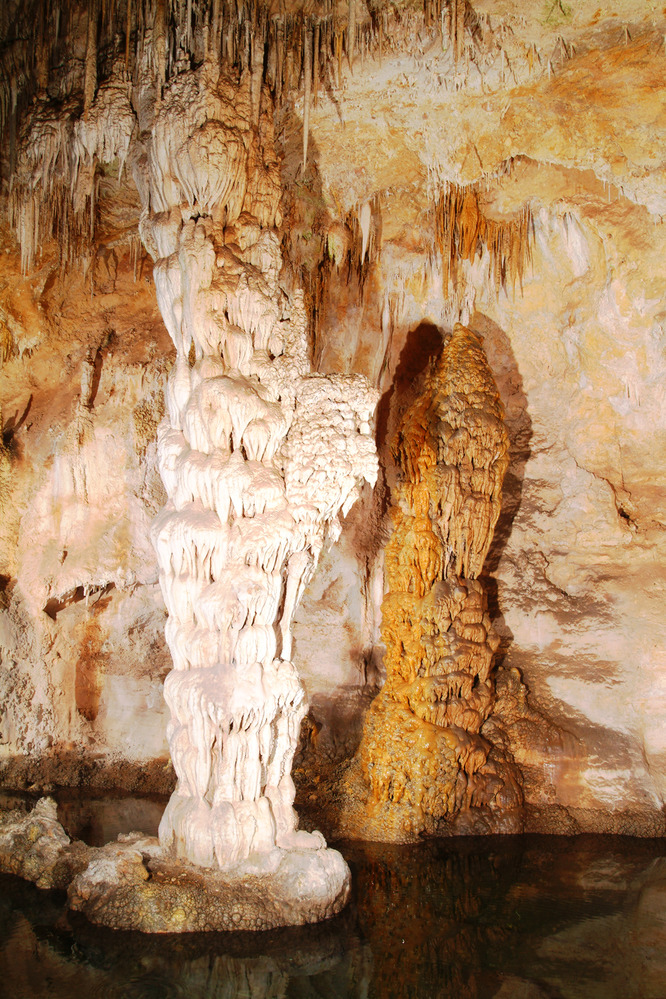
This is my much less successful attempt.
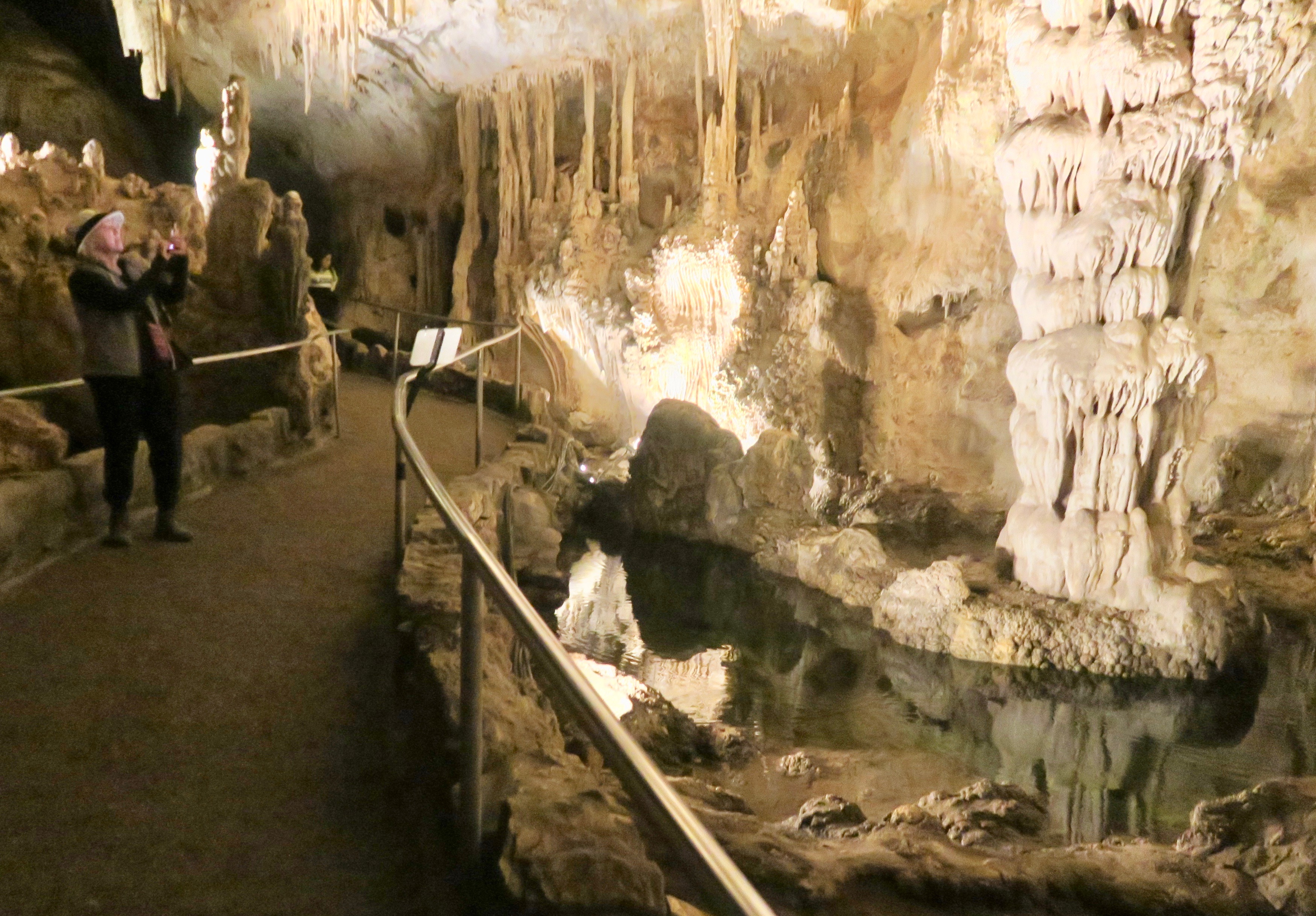
Next is the Whale’s Mouth and it does bring to mind, Moby Dick.
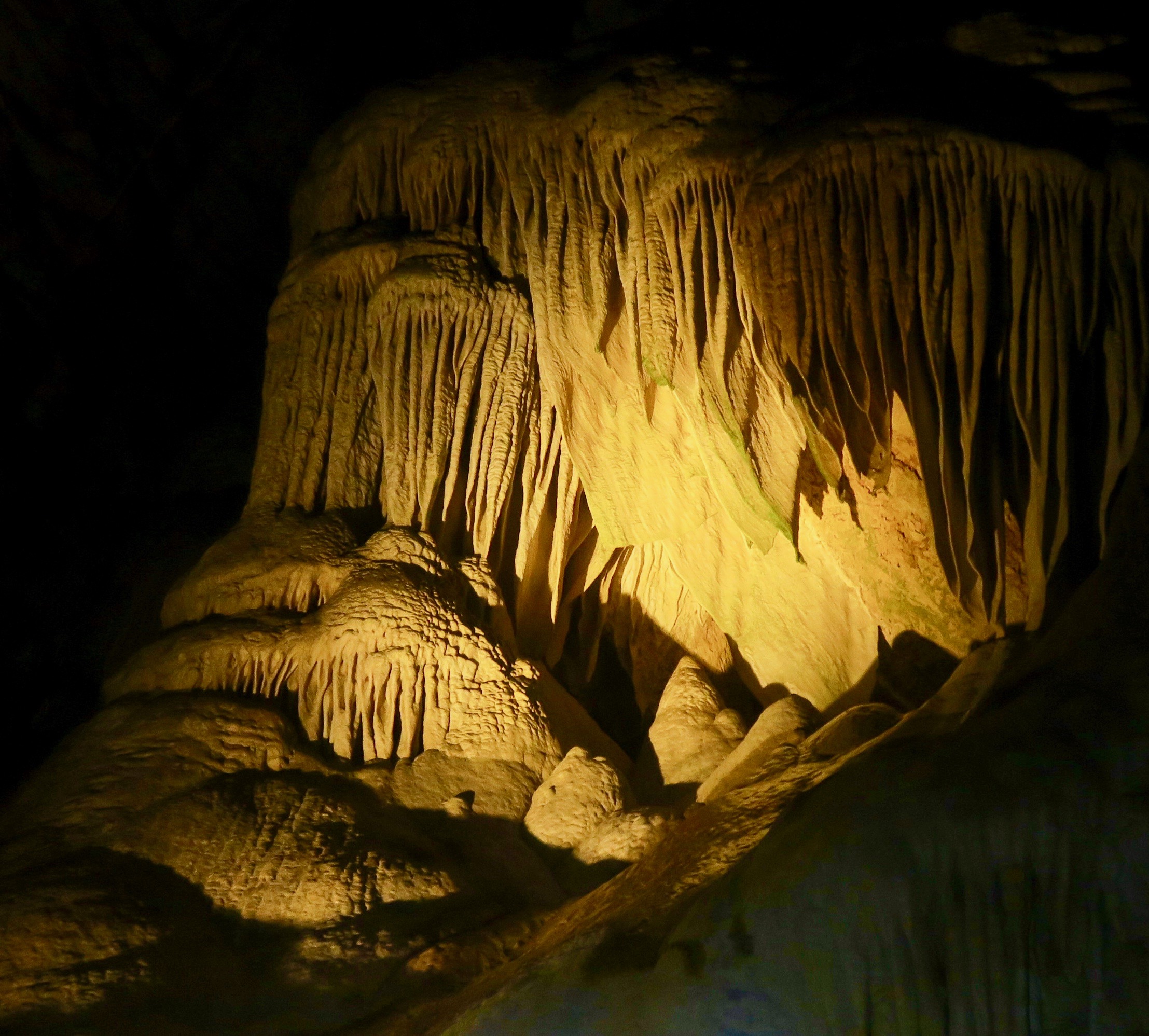
In places the speleothems seems to almost be flowing out of the cavern walls.
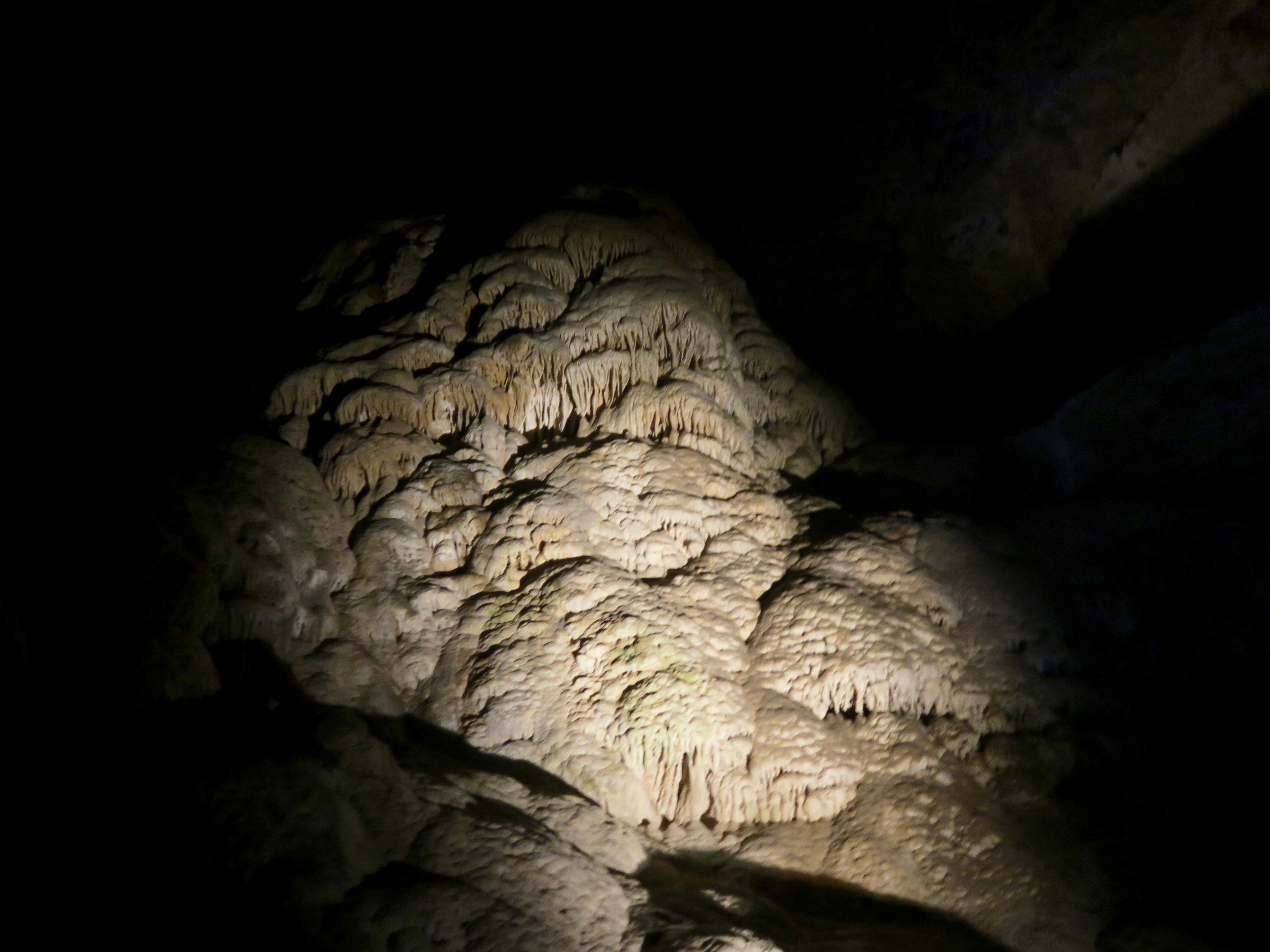
And others you might easily confuse with coral formations.
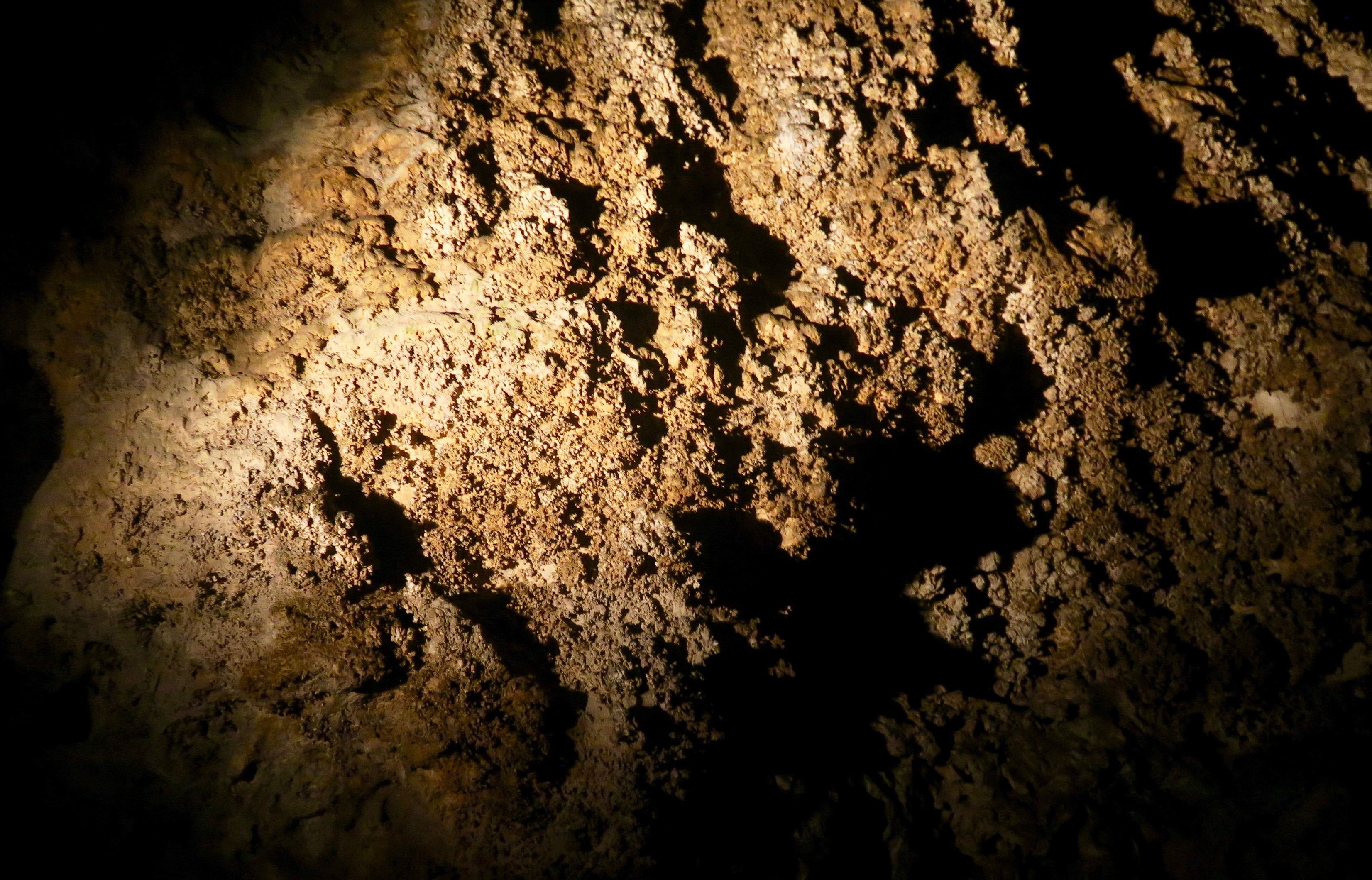
When you think you have finally finally reached the floor of Carlsbad Caverns the way appears to be blocked by the enormous and aptly named Iceberg Rock. By now you will have a real appreciation of the way the NPS engineers have created this pathway that lets you see many of the best formations while at the same time disturbing as little as possible of the natural elements of the system. That in itself is one of the wonders of this place.
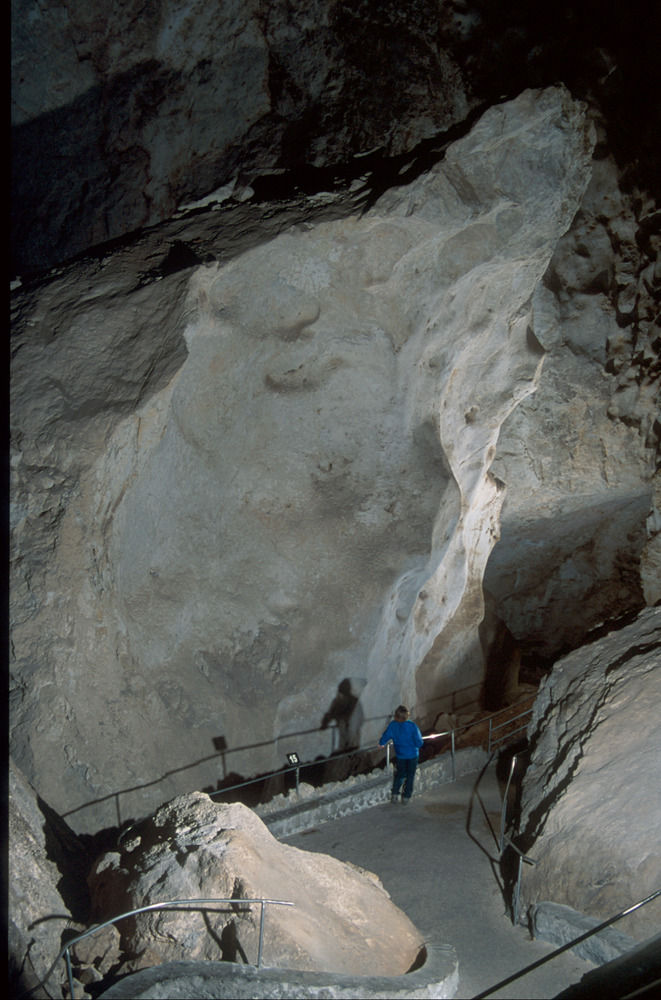
Getting around Iceberg Rock you find you are nowhere near the bottom, but instead entering the steepest part of the path in an area called Devil’s Den. Take note of those two huge stalagmites coming up.
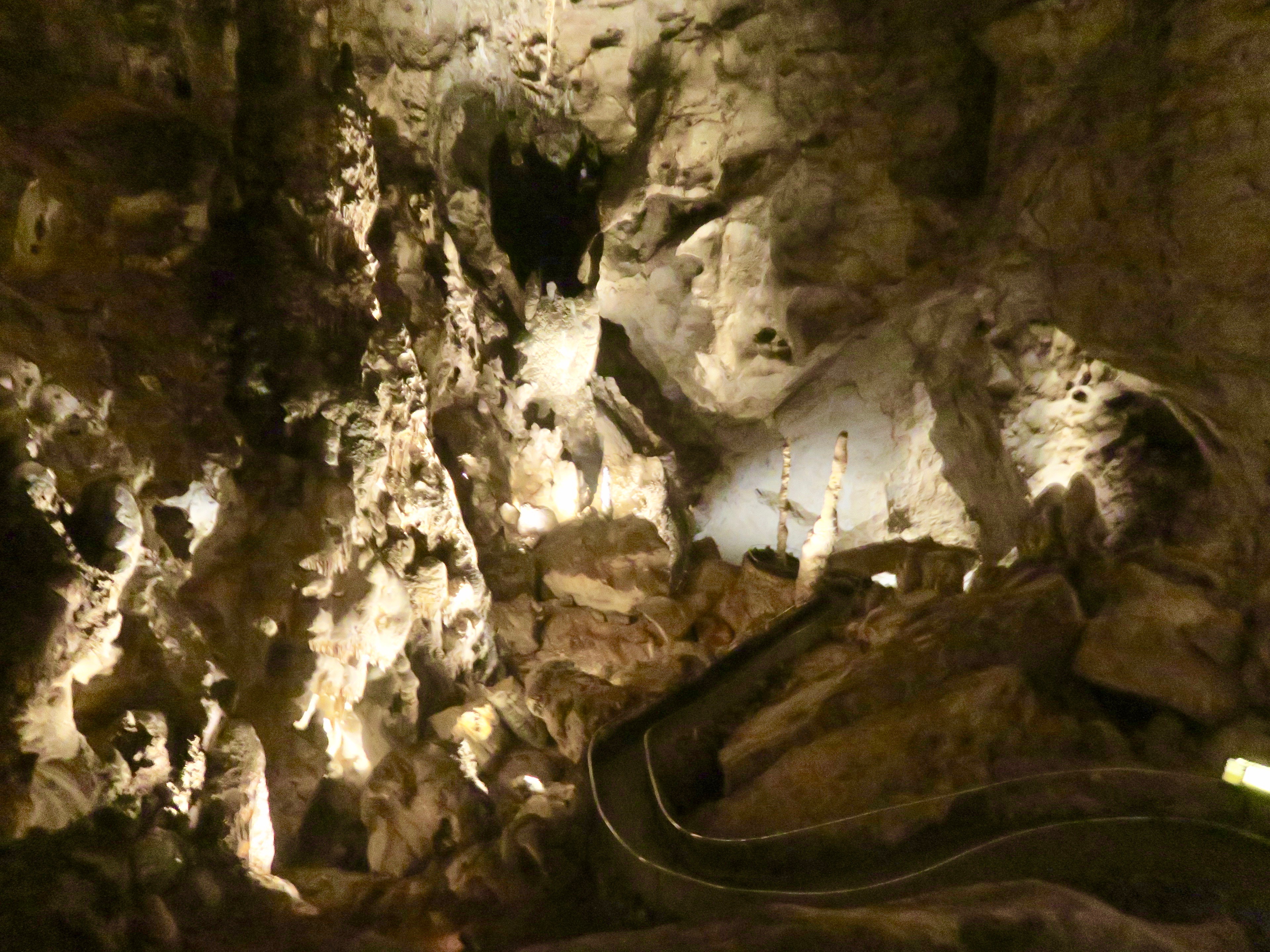
These are the Witch’s Fingers of which this is the largest.
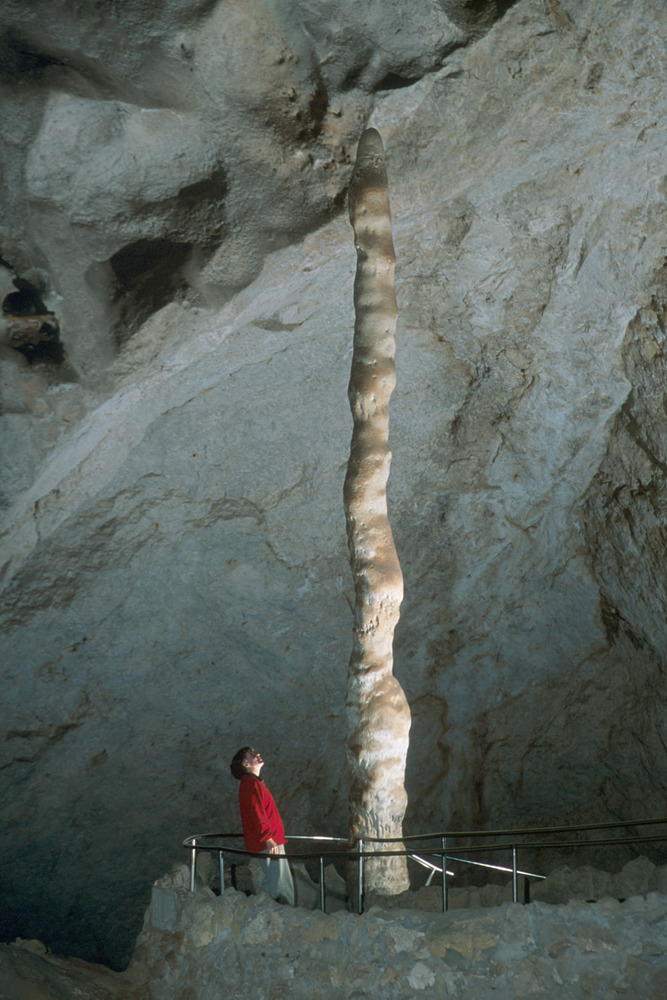
By now there’s a good chance your knees will be aching from the constant downward movement so it’s a relief to arrive at the Big Room which isn’t just big, it’s enormous. It’s 4,000 feet (1,220 metres) long, 625 feet (191 metres) wide and the ceiling rises to a height of 255 feet (78 metres) which means you could fit a 23 story building inside it. Before starting on the trail around the Big Room it’s a good place to take a bathroom break, get some refreshments or just rest your legs.
The Big Room contains an even greater variety of speleothems than the Entrance Trail. Perhaps due to the immensely high ceiling taking good pictures of them isn’t easy. Here are just a few, all but the first one from the National Park Service.
Not sure of the correct name for this scary looking one so I just called it Piranha.
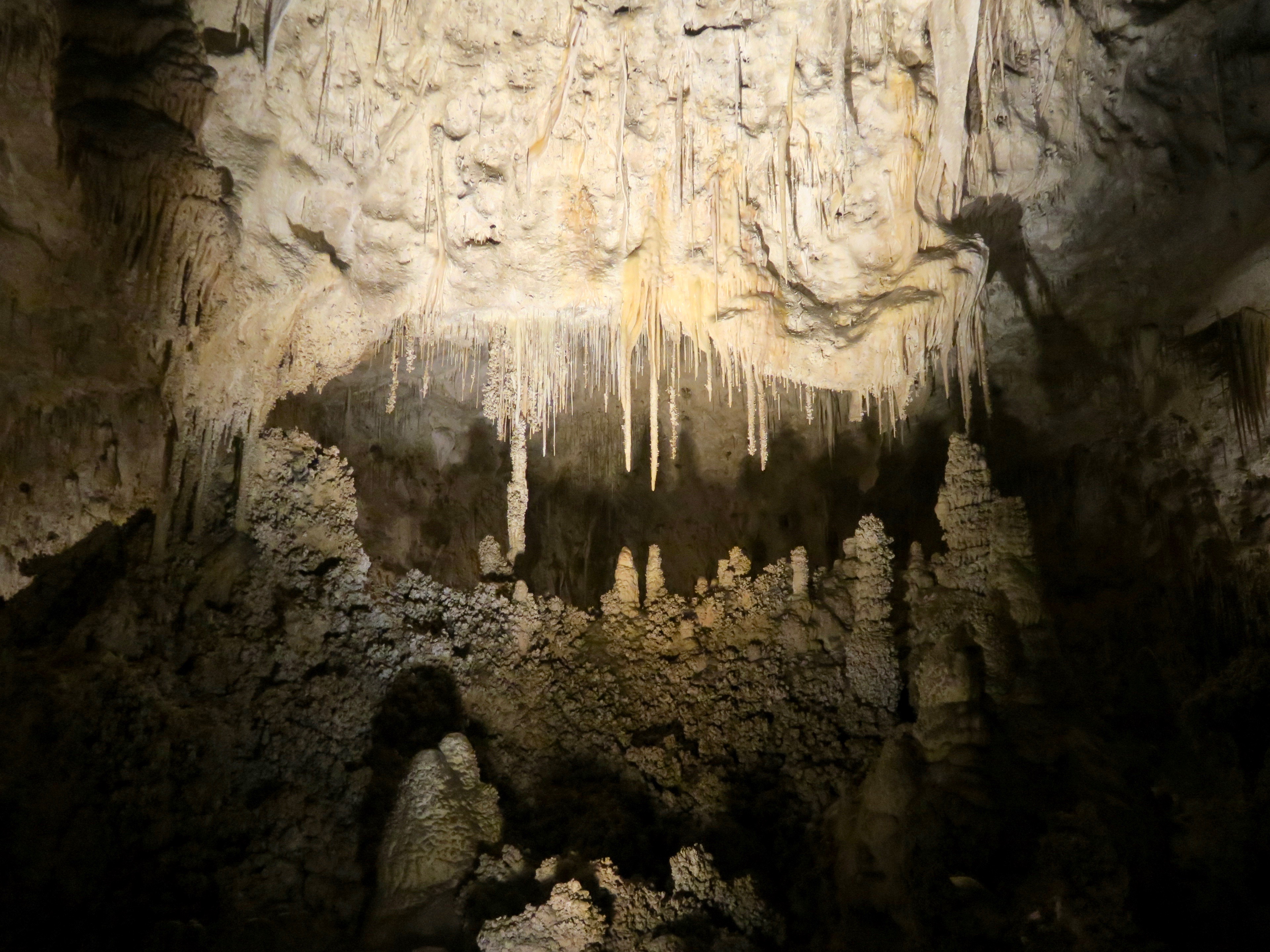
Much easier to see why this is The Caveman.
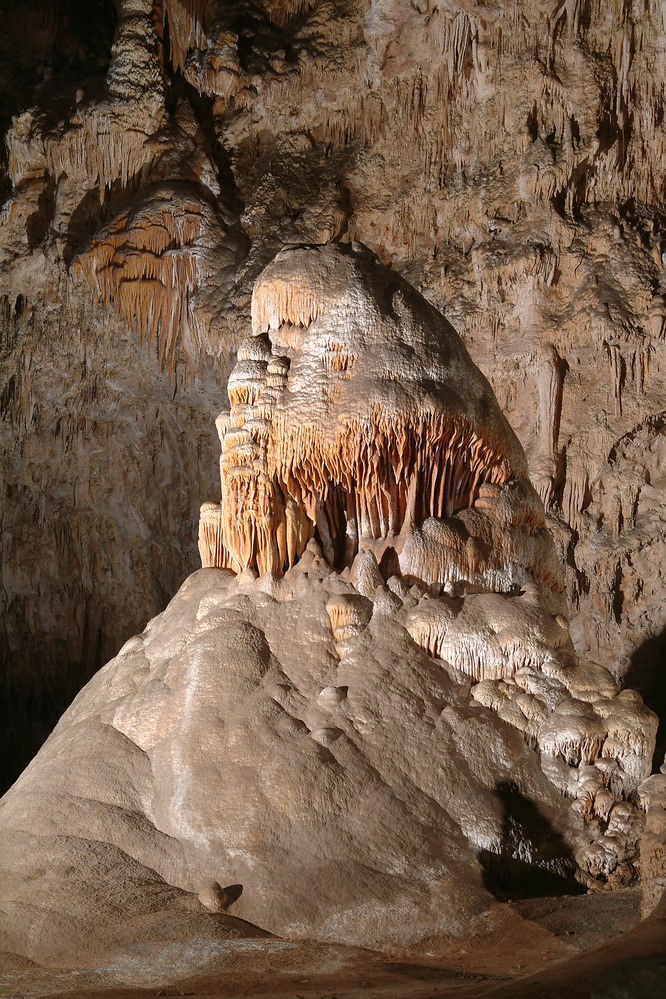
There are a lot of great stalactites in the Big Room of which The Chandelier is one of the best examples.
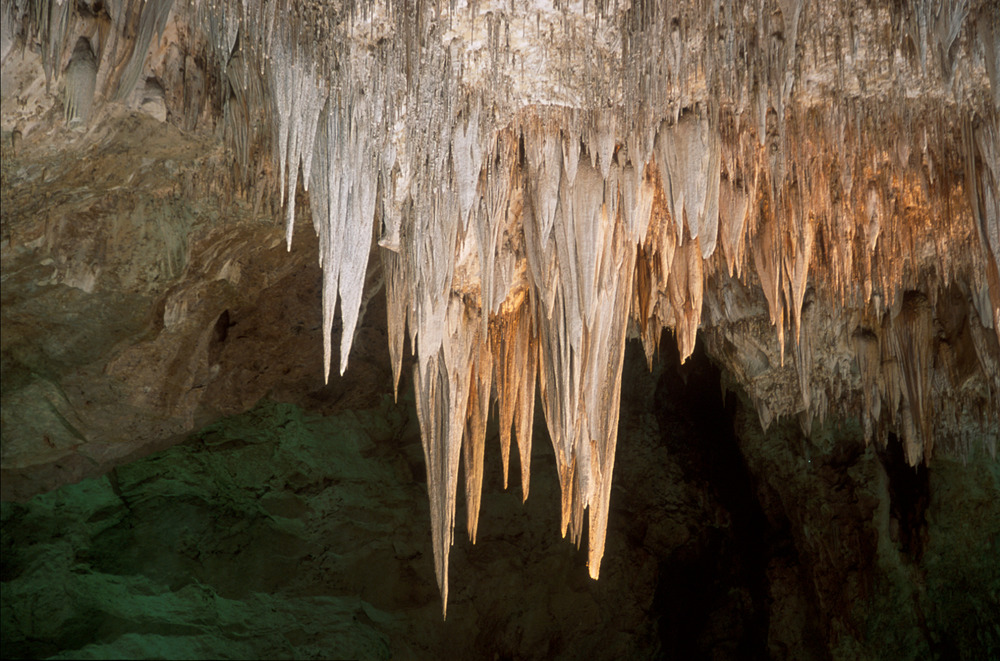
The Doll’s Theatre is perhaps the most sublimely delicate of all the speleothems in Carlsbad Caverns.
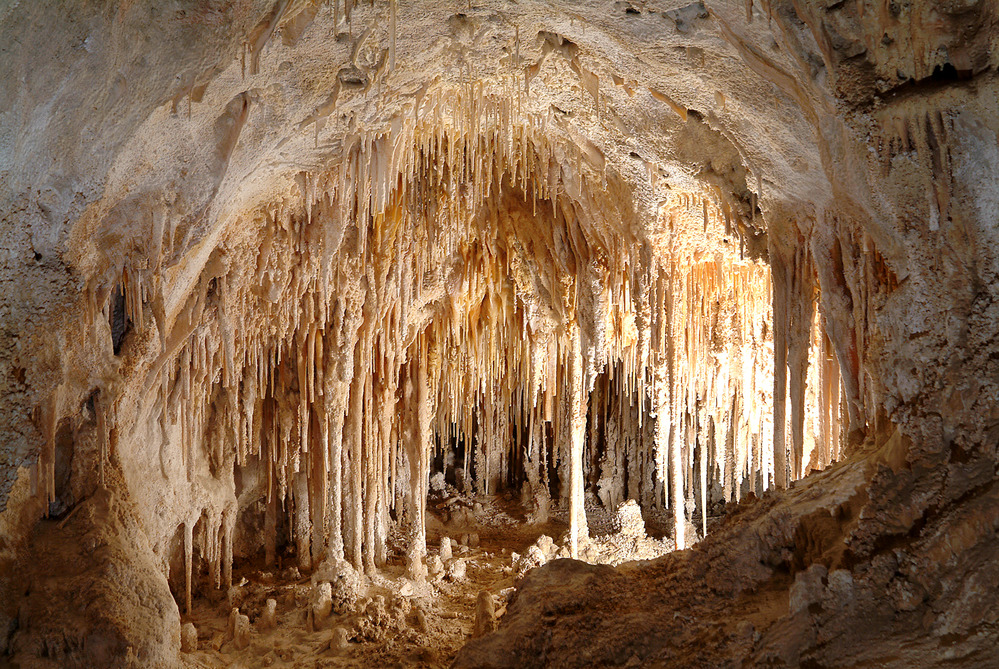
In complete contrast to the Doll’s Theatre is the massive Hall of Giants.
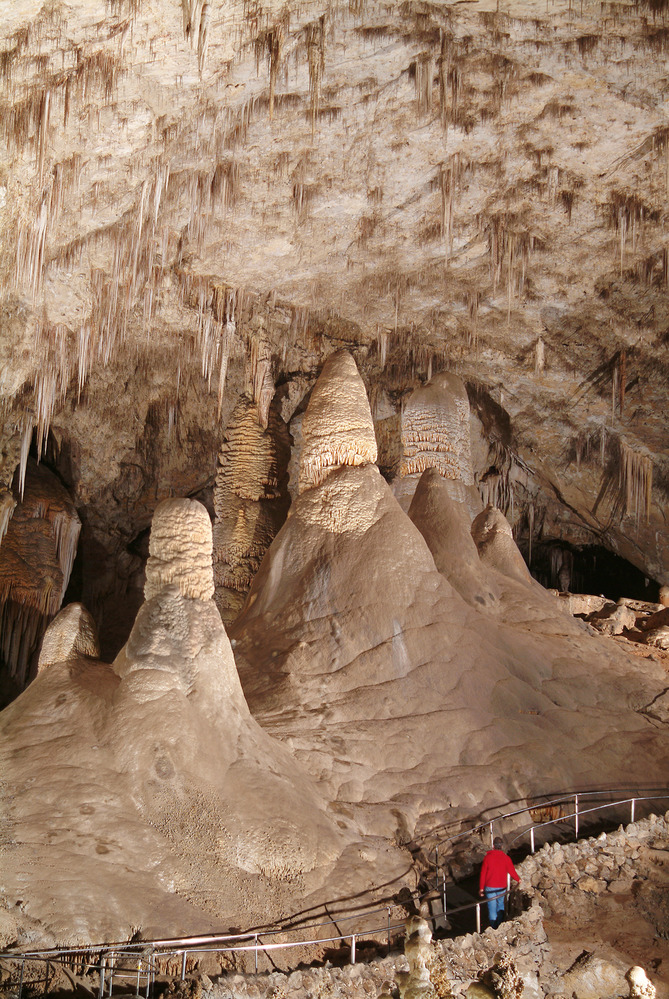
The Temple of the Sun does really resemble a temple you might see in Myanmar or Thailand.
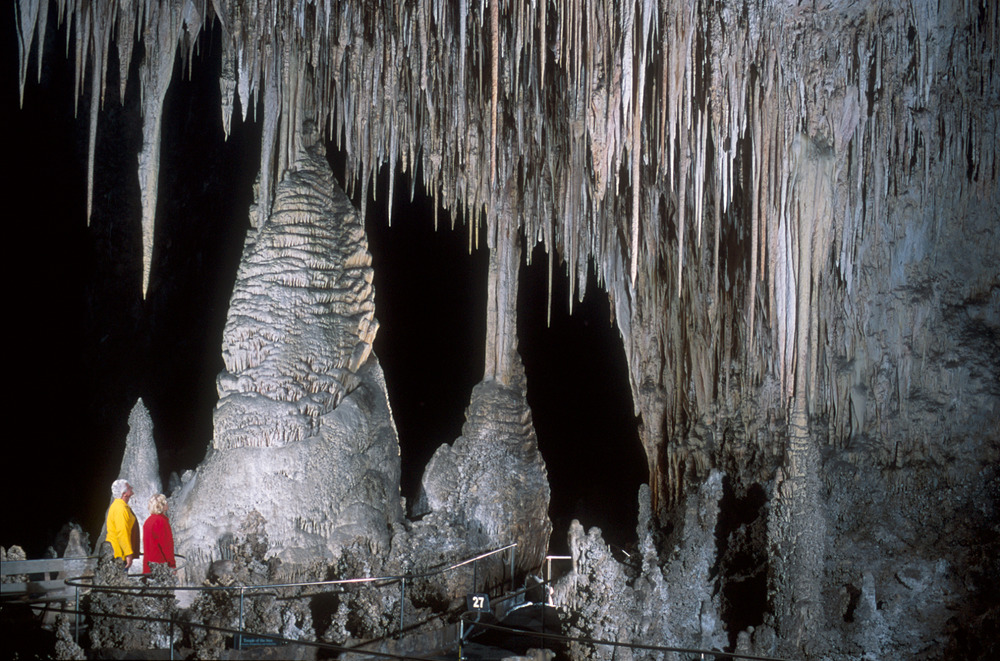
There are many, many more I could include, but I hope there’s enough to convince the reader to put a visit to Carlsbad Caverns very high on your personal ‘must visit before I die’ lists.
Next up is a visit to another one of New Mexico’s amazing natural wonders, White Sands National Monument. See you there.

